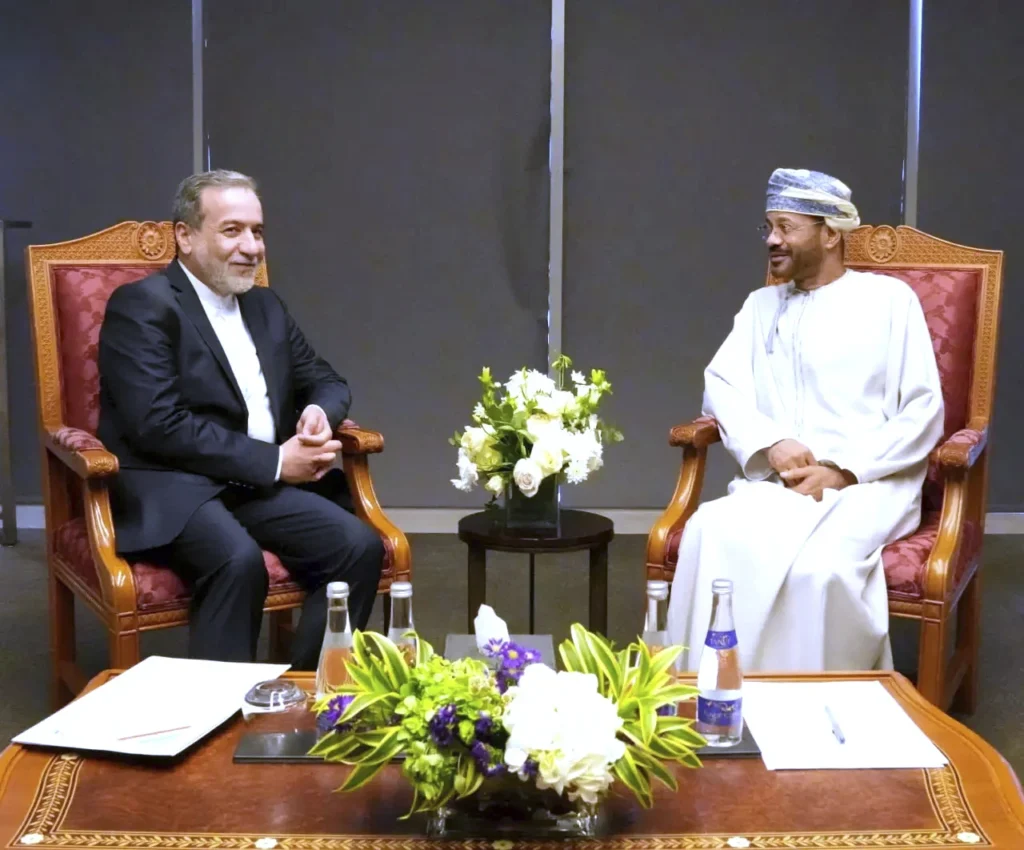In a pivotal moment for international diplomacy, envoys from the United States and Iran held their first face-to-face negotiations in years on Saturday, reopening direct dialogue over Tehran’s controversial nuclear program. The historic meeting, which took place in the outskirts of Muscat, Oman, marks the first substantial diplomatic contact between the two nations since President Donald Trump returned to office.

The initial round of talks featured a brief but significant interaction between U.S. Special Mideast Envoy Steve Witkoff and Iranian Foreign Minister Abbas Araghchi. Iranian state television confirmed that the two men exchanged words in person, a notable development given years of strained relations and indirect channels. The exchange, while brief, signals a cautious thawing of hostilities and suggests that both sides see value in re-engaging through diplomacy.
Constructive Atmosphere Amid Longstanding Tensions
Despite ideological and strategic differences, both sides described the talks in unexpectedly optimistic terms. The White House characterized the discussions as “very positive and constructive,” acknowledging the complexity of the issues at hand while applauding the step forward in diplomacy.
“I can’t tell you much because nothing matters until a deal is done,” President Trump told reporters aboard Air Force One while en route to a public event in Miami. “But it’s going okay — the Iran situation is going pretty good, I think.”
Iran’s Foreign Minister Araghchi echoed the sentiment during an interview with Iranian state media, describing the meeting as “constructive” and clarifying that four rounds of indirect messages were exchanged prior to the in-person engagement.
“We are not interested in wasting time with negotiations that go nowhere,” Araghchi stated. “Both sides agree that if an agreement is to be reached, it must happen as quickly as possible — but we also know this will not be easy.”
Talks Mediated by Oman, to Resume April 19
The discussions took place on the outskirts of Muscat, Oman, beginning around 3:30 p.m. local time and concluding just before 6:00 p.m. According to Associated Press journalists on the ground, a convoy believed to be carrying Witkoff was seen entering a secure compound shortly after departing from Oman’s Foreign Ministry. Minutes later, the Iranian delegation arrived, and indirect talks commenced before the brief face-to-face meeting took place.
Omani Foreign Minister Badr al-Busaidi played a crucial role in facilitating the dialogue and said he was hopeful for progress.
“We’ve taken an important first step,” al-Busaidi posted on X (formerly Twitter). “The atmosphere was friendly and conducive to bridging viewpoints. Our shared goal is to contribute to global peace and regional stability.”
Both the United States and Iran confirmed that the next round of talks is scheduled for Saturday, April 19.
Nuclear Enrichment and Sanctions Relief Remain Core Issues
At the heart of the negotiations are two deeply contentious issues: Iran’s enrichment of uranium and the crippling U.S.-led sanctions on its economy.
Iran is currently enriching uranium up to 60% purity, just a technical step away from weapons-grade levels. This far exceeds the 3.67% cap agreed to under the 2015 Joint Comprehensive Plan of Action (JCPOA), the deal from which the United States unilaterally withdrew in 2018 during Trump’s previous term.
Witkoff has signaled a tough line, telling The Wall Street Journal that any acceptable agreement would begin with the dismantling of Iran’s capacity to weaponize its nuclear program.
“Our position begins with dismantlement — that’s non-negotiable,” he said. “There can’t be weaponization of your nuclear capability. That’s our red line.”
Iran, however, is expected to seek permission to continue enrichment up to 20% or higher and has made it clear it will not abandon its nuclear program entirely, viewing it as a sovereign right and a hedge against foreign threats.
Diplomatic Risks and Regional Ramifications
Both sides are walking a geopolitical tightrope. The Trump administration has repeatedly threatened military strikes on Iran’s nuclear facilities if diplomacy fails, while Tehran warns that it may actively pursue nuclear weapons if pressured too far. Iranian Supreme Leader Ayatollah Ali Khamenei and other officials continue to cite the 2011 death of Libyan dictator Moammar Gadhafi — after he agreed to dismantle Libya’s weapons programs — as a cautionary tale about trusting the United States.
This historical narrative makes compromise particularly fraught for Iranian negotiators, who must also navigate domestic political pressures from powerful hard-line factions.
While Saturday’s brief face-to-face encounter between Witkoff and Araghchi may not have produced concrete results, it represents a symbolic and strategic milestone in U.S.–Iranian relations. The reestablishment of direct contact, even if limited, raises cautious hopes that future rounds of negotiation might achieve what has eluded both countries for decades: a stable, verifiable agreement on nuclear limits that satisfies both international security concerns and Iran’s desire for autonomy.
Whether this fragile dialogue can survive the pressure of politics, both domestic and global, remains to be seen.



